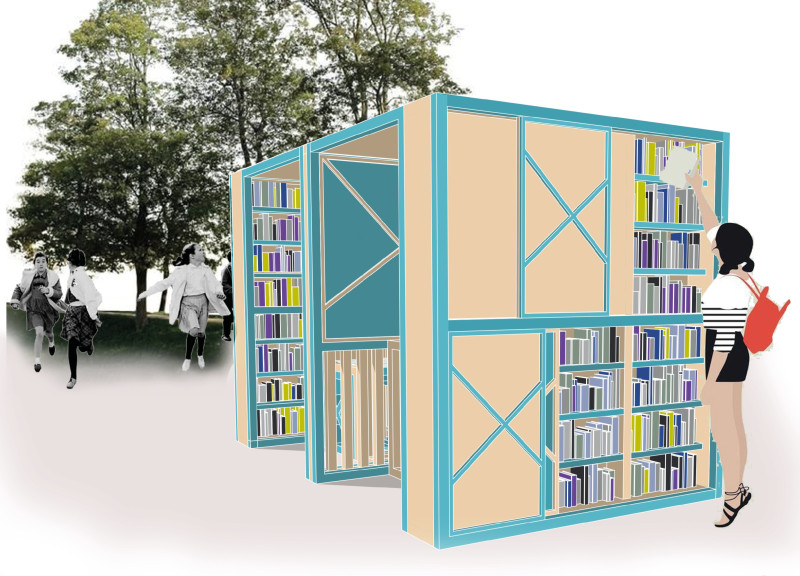5 key facts about this project
The architectural design is characterized by a modular framework, allowing for easy relocation and adaptability to different contexts. The project features two primary seating areas, created with the intention of providing comfort for users as they engage with literature. The use of partition walls creates a degree of privacy while maintaining an open ambiance conducive to collaboration and exchange.
The inclusion of strategically placed book storage enhances usability, making it easy for users to access a diverse array of books. The design employs recycled wood and oriented strand board (OSB) as key materials, reflecting a commitment to sustainability while reinforcing the visual identity of the project.
Unique Design Approaches
What sets "bookXchange" apart from conventional reading spaces is its focus on communal interaction over isolated experiences. The architectural configuration encourages social engagement among users, making reading a shared activity rather than an individual task. This approach promotes the concept of reading as a community-oriented endeavor, bridging gaps between diverse demographics.
The design meticulously considers interactions with the surrounding environment. Multiple access points invite foot traffic, while bicycle stands integrate sustainable transportation options into the design. The turquoise accents serve a dual purpose: aesthetically pleasing enhancements that also create a calming atmosphere, inviting visitors to engage with the space.
Exploration of Architectural Details
The architectural plans and sections of "bookXchange" reveal specific design decisions that prioritize function and form. With a focus on the efficient use of space, the layout accommodates two visitors comfortably while allowing for a robust exchange of ideas and literature. These architectural details showcase an intentional balance between functionality and user experience, ensuring that the space remains practical and welcoming.
The project's commitment to sustainability extends beyond material choice; it exemplifies modern architectural ideas aimed at social responsibility. The modular design allows for community adaptability, transforming underutilized areas into vibrant centers for learning and sharing.
Readers are encouraged to explore the presentation of "bookXchange" further for a detailed examination of architectural plans, sections, and innovative designs that illustrate the project's function and concept. The insights gained from studying these elements will deepen understanding of how this project redefines community engagement with literature.


























